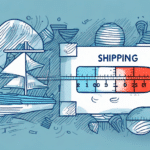How to Estimate Package Shipping Costs
Shipping costs are a critical expense for businesses dealing with physical products. Whether you're an e-commerce retailer or a small business owner, accurately estimating shipping costs is essential for maintaining profitability and ensuring customer satisfaction. This guide explores the key factors influencing shipping costs and provides strategies to manage and optimize your shipping expenses effectively.
Key Factors Affecting Shipping Costs
Package Weight and Dimensions
The weight and size of a package are primary determinants of shipping costs. Carriers use dimensional weight pricing, which considers both the package's dimensions and its actual weight. Accurately measuring your packages can help avoid unexpected costs.
Shipping Distance
The distance a package travels significantly impacts the shipping cost. Longer distances typically incur higher fees due to increased fuel consumption and labor. Additionally, international shipments may involve customs duties and taxes, further affecting costs.
Delivery Speed
The urgency of delivery plays a crucial role in cost estimation. Expedited services like overnight or two-day shipping commands higher prices compared to standard ground shipping. Balancing delivery speed with budget constraints is essential for cost-effective shipping.
Destination and Customs Fees
Shipping to remote or international locations often involves additional fees. Understanding the specific customs regulations and potential taxes for different destinations can help in more accurately estimating shipping costs.
Choosing the Right Shipping Carrier
Carrier Options and Coverage
Selecting the appropriate shipping carrier depends on factors such as delivery speed, coverage area, and reliability. Major carriers like UPS, FedEx, and USPS offer various services tailored to different business needs.
Pricing Structures and Discounts
Different carriers have unique pricing models and discount structures. Businesses that ship in volume often qualify for discounted rates. It's beneficial to negotiate with carriers or consider third-party logistics providers to secure competitive pricing.
Reliability and Customer Service
Ensuring timely and intact delivery is paramount. Researching a carrier's reliability through customer reviews and industry ratings can help in making informed decisions. Additionally, robust customer service support can resolve issues promptly, minimizing disruptions.
Calculating Shipping Costs
By Weight
Shipping costs based on weight involve multiplying the package's weight by the carrier's rate per pound or kilogram. Using a digital scale ensures accurate measurements, which are crucial for precise cost estimation.
By Distance
Cost estimation based on distance considers the shipping zone or mileage. Carriers often have zone-based pricing, where farther zones incur higher costs. Utilizing online zone calculators provided by carriers can aid in determining the exact cost based on distance.
Utilizing Online Shipping Calculators
Online shipping calculators are invaluable tools for estimating costs accurately. Platforms like ShipStation, Shippo, and Easyship aggregate rates from multiple carriers, allowing businesses to compare and choose the most cost-effective options.
Managing and Reducing Shipping Expenses
Negotiating Better Rates
Negotiating with carriers can lead to significant cost savings. Businesses with consistent shipping volumes can leverage their volume to secure discounted rates. Building long-term relationships with carriers may also open doors to exclusive deals and partnerships.
Optimizing Packaging
Efficient packaging reduces both weight and dimensional weight, leading to lower shipping costs. Choosing the right size and using lightweight, protective materials can minimize expenses without compromising product safety.
Tracking Shipping Expenses
Implementing robust tracking systems helps monitor shipping expenses effectively. Tools and software that automate tracking can identify cost-saving opportunities and ensure that shipping processes remain within budget.
Avoiding Common Estimation Mistakes
Ignoring Additional Fees
Failure to account for additional fees like fuel surcharges, residential delivery fees, and customs duties can lead to inaccurate shipping cost estimates. Reviewing carrier fee schedules thoroughly is essential for comprehensive cost planning.
Incorrect Package Measurements
Using inaccurate measurements can result in either overpaying or undercharging for shipping. Investing in reliable measuring tools and double-checking measurements can enhance estimation accuracy.
Overlooking Regional Rate Differences
Shipping rates can vary regionally based on factors like carrier infrastructure and competition. Understanding and incorporating these differences into cost estimates ensures more precise budgeting.
The Impact of E-commerce on Shipping and Fulfillment Costs
The rise of e-commerce has exponentially increased shipping volumes, introducing new challenges and opportunities for businesses. Efficient shipping strategies, such as utilizing fulfillment centers and leveraging bulk shipping rates, are crucial for managing increased demand and maintaining profitability.
Managing Customer Expectations Around Shipping Costs
Transparency in Shipping Costs
Clearly communicating shipping costs during the checkout process fosters trust and reduces cart abandonment rates. Transparent pricing helps customers make informed decisions and enhances overall satisfaction.
Offering Multiple Shipping Options
Providing various shipping options caters to different customer needs and budgets. Options ranging from economy to expedited shipping allow customers to choose based on their urgency and willingness to pay.
Setting Realistic Delivery Timelines
Accurate delivery estimates prevent customer dissatisfaction due to unexpected delays. Integrating reliable tracking systems and managing expectations through consistent communication are key to maintaining positive customer relationships.
Conclusion
Estimating shipping costs involves a multifaceted approach that considers weight, dimensions, distance, delivery speed, and carrier selection. By understanding these factors and implementing effective management strategies, businesses can optimize their shipping expenses, enhance profitability, and ensure customer satisfaction. Leveraging tools like online shipping calculators and maintaining transparent communication with customers further reinforces a robust shipping strategy.






















